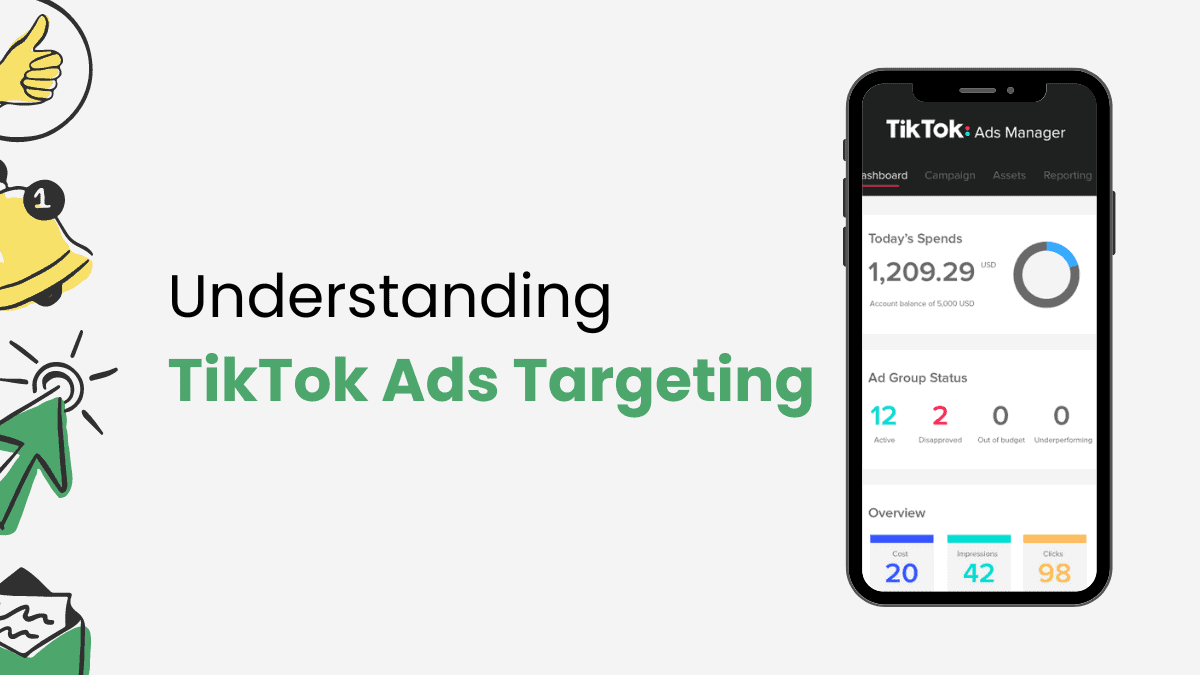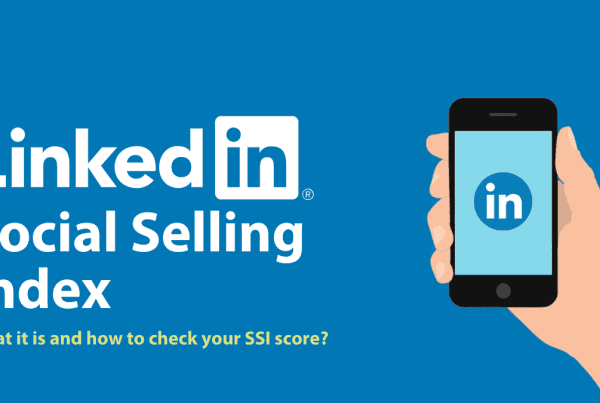
TikTok has managed to capture the attention of millions worldwide. This social media phenomenon, known for its short-form videos and creative content, has become a powerhouse in digital marketing.
According to What’s the Big Data? TikTok is currently one of the most popular social media platforms worldwide with over 1.7 billion users as of 2023. People of different ages use TikTok, but the interesting fact is that it has a major audience of age groups between 16 and 24 years, an ideal group that businesses want to reach. Due to this, TikTok has been a great place for businesses to find new customers.
In the digital marketing sector, TikTok stands out as a crucial platform. Its unique algorithm ensures that users see content tailored to their interests, making it an effective platform for targeted advertising. This allows brands to showcase their ads to audiences that are most likely interested in their products or services.
Understanding and mastering TikTok ads targeting is essential for businesses aiming to thrive in today’s digital landscape. It’s not solely about reaching a vast audience, but about connecting with the right audience(i.e. focusing). In this article, we’ll explore TikTok ad targeting options and how you can utilize it to engage with your desired demographic.
TikTok Ads Targeting
Ad targeting is a key idea in digital marketing. It means adjusting your marketing to reach a particular group of people – your target audience.
TikTok Ads targeting is like a bunch of options that help businesses find the right people who might want to buy their stuff. So, instead of just throwing ads out there randomly, you can use these options to aim at the people who are most likely interested in what you’re selling.
Before, advertisers on TikTok could pick between two targeting options: Custom and Automatic. But now, in the latest update from November 2023, TikTok has made a change. All ads on TikTok will automatically use broad targeting optimizations. This means they’ll try to reach a wider audience.
This change could be beneficial as TikTok claims it can lower ad creation costs while reaching a larger audience that is more likely to engage. According to TikTok, broad targeting can reduce the cost per acquisition by 15% and boost the conversion rate by 20%.
But even though TikTok thinks automatic targeting is great, there are times when manual targeting is better, like if you want to focus on a specific place. So, it’s important to understand all the different targeting options available.
TikTok Ads Targeting Options
TikTok Ads Manager offers five targeting options. Let’s take a look at each of these options one by one.
Demographics targeting
Since 2023, TikTok has added more ways to aim ads at specific groups of people, which we call demographics. Now, there are 5 options for demographic targeting:
- Gender: You can choose to show your ads to M or F.
- Language: This depends on what language people use on the app.
- Age: You can target people based on their age group, like teens, young adults, or seniors.
- Location: You can target people in certain places, like cities or countries. But, this option varies for US citizens who can pick more specific areas like states or cities.
- Spending power: This lets you show ads to people who tend to spend more based on their shopping habits on TikTok.
When you’re deciding who to aim your ads at, it’s important to think about your product and who might want it. For example, if you’re selling fancy jewelry, you might want to aim your ads at people who have more money to spend.
So, when you’re setting up your ad campaign, consider these demographic options carefully to make sure you’re reaching the right people.
Audience targeting
Targeting the right audience on TikTok is super important for your ads to do well. While it’s optional, TikTok actually suggests skipping this part, letting TikTok figure out the best audience for you. But if you know exactly who you want to reach, you can use the Include and Exclude sections in TikTok Ads Manager.
Include: This is where you tell TikTok to include people who share traits with your previous customers or followers. This info comes from places like your customer list, people’s activity in your app or website, and more.
Exclude: On the other hand, Exclude means you’re telling TikTok to leave out people.
Now, let’s talk about two ways to make TikTok narrow down your target audience:
Custom Audience
This is great for targeting people who have already shown interest in your business before. It’s helpful for things like reconnecting with past customers or getting more people to take action (install an app, visit the website, see products, etc.). There are six ways to make a Custom Audience i.e. Customer file, Engagement, App activity, Website traffic, Lead generation, and Business account audience.
Lookalike Audience (LAL)
This tool helps you find new customers who are similar to your current ones. By looking at things like age and interests, it expands your potential audience. To get good results, you need a source audience of at least 100 people and to be clear about who your audience is. You can choose how closely you want the new audience to match your existing one, from very close to casting a wider net to find more potential customers.
Interests & Behaviors targeting
TikTok Interest & Behavior targeting helps advertisers find potential customers based on what they like and how they use TikTok. It’s split into 5 main categories:
![[your-subject] - EyeUniversal Interests & Behaviors tiktok ads targeting](https://www.eyeuniversal.com/wp-content/uploads/2024/06/Interests-Behaviors-tiktok-ads-targeting-1024x683.gif)
- Interests: This looks at what types of videos people enjoy watching.
- Purchase intention: Shows ads to people who are actively looking to buy something.
![[your-subject] - EyeUniversal Interests TikTok Ads Targeting](https://www.eyeuniversal.com/wp-content/uploads/2024/06/Interests-TikTok-Ads-Targeting-1024x683.gif)
- Video Interactions: Tracks how people engage with videos on certain topics.
- Creator Interactions: Finds users who follow or view specific types of profiles.
- Hashtag Interactions: Targets people who interact with certain hashtags.
These categories are divided into smaller groups to help you find the right audience. If you can’t find what you’re looking for, you can just type it into the search bar. This way, you can reach the people who are most likely to be interested in your business.
Device targeting
If most or all of the people you want to reach are using a certain device or settings, you can adjust the Device targeting option on TikTok to fit your needs. There are 6 options to choose from:
- Operating system (OS) versions: This lists different versions of the operating system you select.
- Device model: It suggests specific devices based on the operating system you choose, like Android phones from different brands.
- Connection type: You can target people based on the type of internet connection they use, like WIFI or mobile data.
- Carriers: This lets you show ads to users based on their mobile phone company.
- Internet service provider (ISP): It targets users based on the internet provider they use.
- Device price: You can target users based on how much they paid for their device, either at any price or a specific price range.
These options help you reach the right people based on the devices they use and how they’re connected to the internet.
Besides the basic targeting we discussed before, TikTok has some smart targeting options to improve your outcomes and make things easier for you.
Smart TikTok ads targeting options
Let’s explore three clever targeting options to make your ads perform even better:
Targeting recommendations
These are suggestions TikTok gives you to help you reach the right audience. By looking at how similar ads have been done and analyzing your ads, TikTok recommends specific Interest & Behavior categories that fit your brand.
It’s easy to set up: just go to “Recommended categories” under Interests & Behaviors and click “Show all” to see TikTok’s suggestions. The first recommendation will have the biggest audience, and it gets more specific from there.
Smart targeting
This is like an upgraded version of Targeting Expansion. TikTok offers Smart targeting options, including Smart audience and Smart Interest & behavior. When you turn this on, TikTok starts with your precise targeting and then adjusts it as needed to get better results.
You can use Smart targeting for different advertising goals like getting more website visits or app installations. Just make sure you’ve chosen at least one targeting option before turning on Smart targeting.
These options help you reach the right people and improve your ad performance on TikTok.
How to set up your TikTok ads campaign
Setting up an ad campaign on TikTok is a straightforward process. Here’s a step-by-step guide:
- Create an Ads Account: First, you need to create an ad account on TikTok’s advertising platform, TikTok Ads Manager.
- Start a New Campaign: Click on the ‘Campaign’ tab and then ‘Create’. This will start a new ad campaign.
- Choose a Campaign Objective: TikTok offers several objectives such as Traffic, Conversions, and App installation. Choose the one that aligns with your marketing goals.
- Set Up Ad Group: In the ad group settings, you can define your target audience (by choosing the above-mentioned options), ad placements, budget, and schedule.
- Create Your Ad: Finally, you can create your ad. Upload your creative assets (images or videos), write a catchy ad text, and add a call to action.
Now, let’s discuss how to choose the right objective for your campaign:
Choosing the right objective is crucial as it guides TikTok’s ad delivery system to optimize your ad performance. Here are some tips:
- Traffic: Choose this if you want to drive traffic to your website. It’s suitable for blogs, online stores, or any business with an online presence.
- Conversions: If you want users to take a specific action like making a purchase, filling out a form, or downloading a resource, choose conversions. You’ll need to set up TikTok’s Pixel on your website to track these actions.
- App Install: If you’re promoting an app, this should be your go-to objective. It encourages users to install your app.
Maximizing the Performance of Your TikTok Advertising Campaigns
To optimize your TikTok ad campaigns effectively, it’s essential to strike a balance between manual control and leveraging the platform’s automated features. While manual bidding and targeting adjustments provide greater control over costs and placements, relying solely on general and broad targeting or Lookalike audiences may not yield the best results.
Start by adopting a well-balanced approach to audience creation. While targeting specific user groups can be effective, it may come with underperformance, whereas overly broad targeting can lead to higher costs. During the discovery phase, consider setting a general yet relevant audience targeting to allow TikTok Ads Manager’s smart system to identify potential audiences effectively.
Keep an eye on your campaign’s performance and be ready to make adjustments. Utilize TikTok Ad Behavior Targeting to optimize campaigns that may be plateauing. TikTok continuously learns from user behavior and content interactions, so adapting your targeting strategy accordingly can help reach new sets of users and maintain campaign momentum.
Whether you’re manually adjusting targeting or entrusting TikTok’s Business Manager to optimize based on algorithmic insights, the goal is to enhance audience insights and drive sustainable reductions in advertising costs over time. By testing different audiences and ad sets, you can refine your approach and achieve better campaign outcomes.
TikTok Ads Targeting Case Study
There are many success stories but we are picking just two here, it is because these two are well-known and well-covered.
KFC’s TikTok Ads Targeting Campaign
One of the most successful TikTok ad campaigns was carried out by KFC in 2021. The fast-food giant wanted to bring their chicken sandwich advertising campaign to a wider audience, and they chose TikTok as their platform.
Campaign Overview
KFC focused the bulk of its campaign on two TopView ads, which are sponsored videos that TikTok users see when they first open the app. They partnered with prominent TikTok creators to use music, dance, and Colonel Sanders impersonations (portrayal or imitation of Colonel Sanders, the founder of Kentucky Fried Chicken (KFC)) to grab attention.
Results
According to Popularpays, the campaign brought in a whopping 221 million video views for KFC, an engagement rate of 9.3%, and a TopView click-through rate of 13.8%. The brand also saw a 24.7% increase in ad recall rate, which was part of the significant growth in sandwich sales — even selling out in some locations.
HP’s TikTok Ads Targeting Campaign Overview
HP, aiming to become the most sustainable tech company, leveraged TikTok to promote its initiative of reducing plastics. The centerpiece of their campaign was the #HPRadicalResuse hashtag challenge, employing TikTok creators to showcase everyday reuse methods.
Campaign Results
Partnering with TikTok influencers, HP garnered 38 million impressions and over 36 million video views within a day, utilizing One Day Max In-Feed Ads. Furthermore, the Reach & Frequency Spark Ads ensured broad visibility for the campaign.
Key Takeaway
The success of HP’s campaign underscores the potency of addressing social issues in marketing endeavors. By aligning with consumers’ values, HP boosted its brand favorability by 1.9%.
These case studies demonstrate the capability of effective TikTok ads targeting. By understanding their audience and leveraging the platform’s unique features, KFC and HP were able to run a highly successful ad campaign.
Conclusion
Whether it is TikTok or any other platform, continuous optimization is key to successful TikTok ads targeting. It involves understanding your audience, utilizing the platform’s unique features, and consistently testing and adjusting your strategies.
Now, it’s your turn to start experimenting with TikTok ads targeting. With the insights and strategies shared in this article, you’re equipped to create effective ad campaigns that reach your desired audiences. So, dive in and explore the exciting opportunities that TikTok ads targeting offers.


